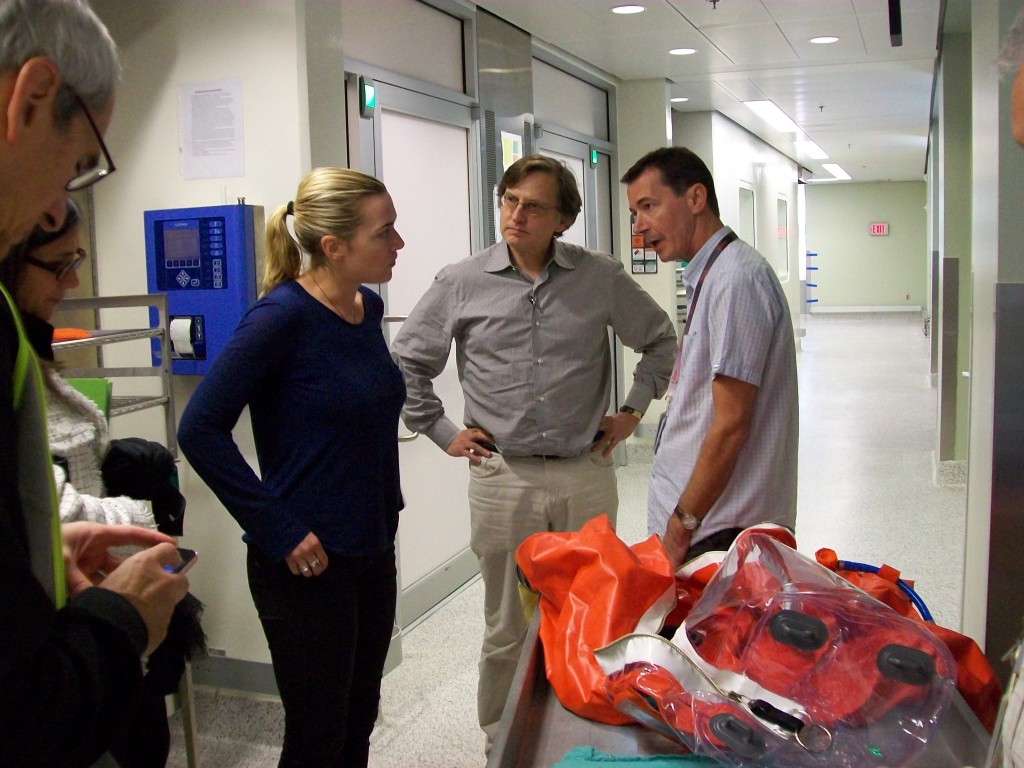 The box office smash hit “Contagion” features heroic (women!) scientists battling a deadly threat. Its advisers included esteemed researchers who helped keep the film true to science. And public health agencies, such as the US Centers for Disease Control and Prevention, are using the film to help build public awareness about the real threat posed by real-life pathogens.
The box office smash hit “Contagion” features heroic (women!) scientists battling a deadly threat. Its advisers included esteemed researchers who helped keep the film true to science. And public health agencies, such as the US Centers for Disease Control and Prevention, are using the film to help build public awareness about the real threat posed by real-life pathogens.
In short, this movie should be catnip for a science junkie like me.
But instead, I’m avoiding “Contagion” like the plague. It’s not that I’m squeamish, that I think the movie is going to cause needless panic, or even that I prefer “The Lion King in 3D.” It’s just that I know too much about how vulnerable we really are to a severe outbreak of infectious disease to enjoy a Hollywood version of this scenario – even one with a happy(-ish) ending.
A lot has been written about how realistic “Contagion” is – for instance, whether researchers could really make a vaccine against an unknown disease so quickly and whether a deadly virus could evolve so quickly and spread around the world so fast.
Well, here’s the reality: we don’t do a very good job making drugs and vaccines against bacteria and viruses that we already know pose a threat – let alone ones we’ve never seen before.
Who could forget the panic that swept the nation, for instance, in 2009, when pregnant women and children were told that they were at risk of dying from H1N1 swine flu, and waited in lines stretching around city blocks for one of the precious shots of the H1N1 flu vaccine? The government fell at least 100 million doses short of its predicted vaccine supply that fall; the bulk of the vaccine arrived far too late – six months after the World Health Organization declared a flu pandemic.
And the US federal government has spent $60 billion in the past decade trying to make new medicines to treat or prevent known infectious pathogens, such as smallpox, anthrax, and even Nipah virus, the inspiration for the fictitious virus featured in “Contagion.” Yet we’ve only developed six new drugs throughout the ten years of this program.
That’s nowhere near enough. In 2009, a Marine was vaccinated against smallpox without realizing he had leukemia. He was treated for the leukemia, but the treatment destroyed his immune system, leaving him vulnerable to a massive infection caused by the weakened virus contained in the smallpox vaccine. The Marine nearly died from the viral infection; it took three drugs to save his life – not one – and they didn’t stop the viral infection from becoming so severe that doctors were forced to amputate both the Marine’s lower legs.
There are a lot of reasons why it’s hard to make drugs against infectious diseases, and only some of them have to do with science. Chief among them: the market for these vaccines and drugs is simply nowhere near as big or as profitable as it is for chronic, widespread conditions such as heart disease, diabetes and Alzheimer’s disease. A vaccine like that developed in “Contagion” might save the world, but it’s never going to make as much money as a drug that must be taken every day for a common condition such as high cholesterol or depression.
So pharmaceutical companies are actually abandoning vaccine development programs; as a result, we frequently see shortages of routine vaccines.
What’s more, the state of our public health system – the home of the epidemic intelligence officers like the one Kate Winslet plays in “Contagion” – are suffering ongoing cuts due to the national and state budget crisis. Local public health departments, for instance, have lost 29,000 workers over the past three years.
Scientists and public health officials hope “Contagion” can help them reverse some of these trends – and that would definitely be a good thing. In fact, I’m glad to see “Contagion” doing so well at the box office and sparking a national conversation. I hope many, many more people go and see it.
But I don’t think I’ll be joining them.
****
Photo: Kate Winslet meets with “Contagion” technical advisers Ian Lipkin of Columbia University (center) and Stuart Nichol of the US Centers for Disease Control and Prevention (right). Courtesy Candice Hoffman, CDC, via Columbia University Mailman School of Public Health.
I have been so so so excited to see Contagion and last night I finally saw it! It was everything I had hoped for and more. On the way out of the theater, my husband and I speculated about whether things would really go to shit that fast (looting, vandalism, beating other people up). And we decided that things would definitely go to shit that fast in NYC. Currently making plans to move to Montana.
The CDC did do some awfully fast work in that movie. Not sure we could expect such a rosy outcome in real life. (Spoiler alert) I STILL want to know what they saw when they were digging around in Gwyneth Paltrow’s skull that made them shrink back in horror.
Cassie: Do you promise to save us all when you are the last woman standing in Montana?
Yes. You can come live in my bunker and eat homemade cherry preserves.